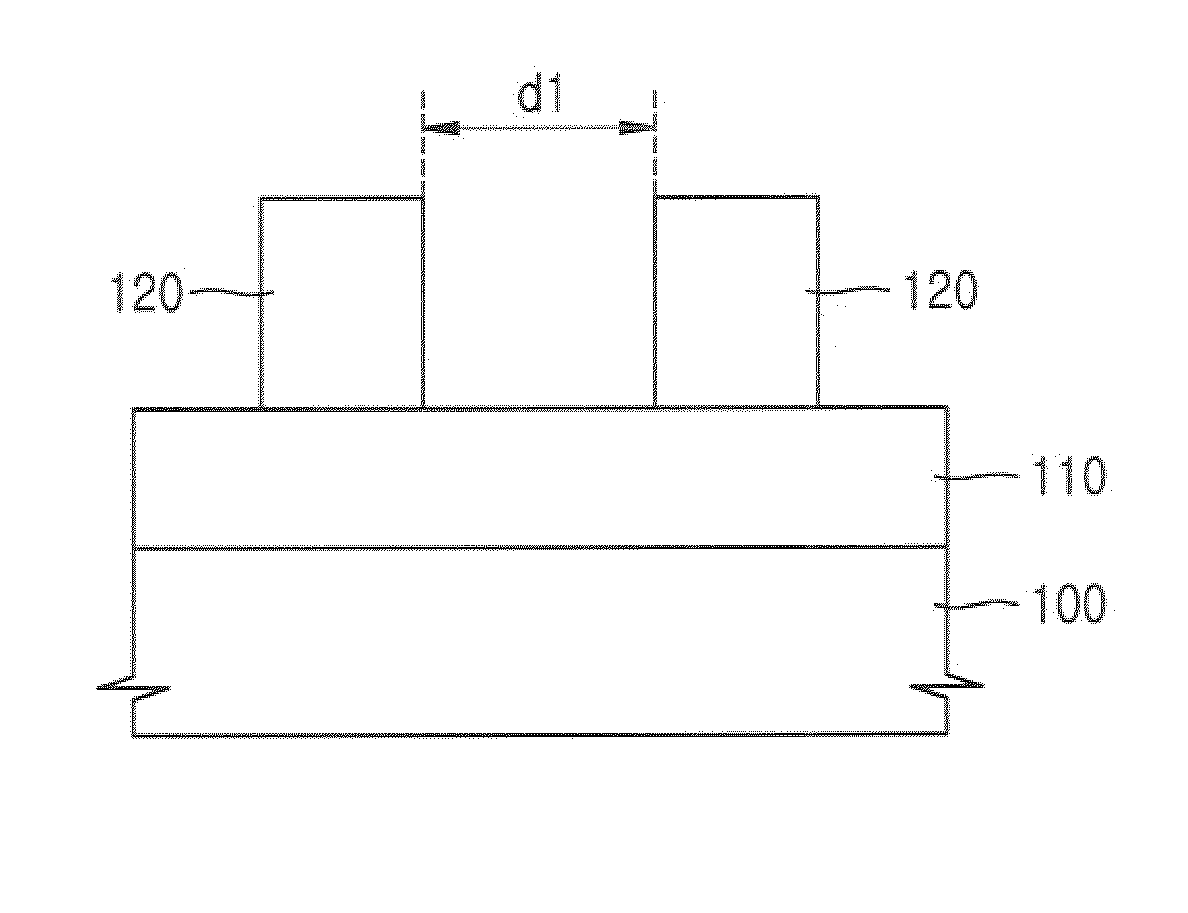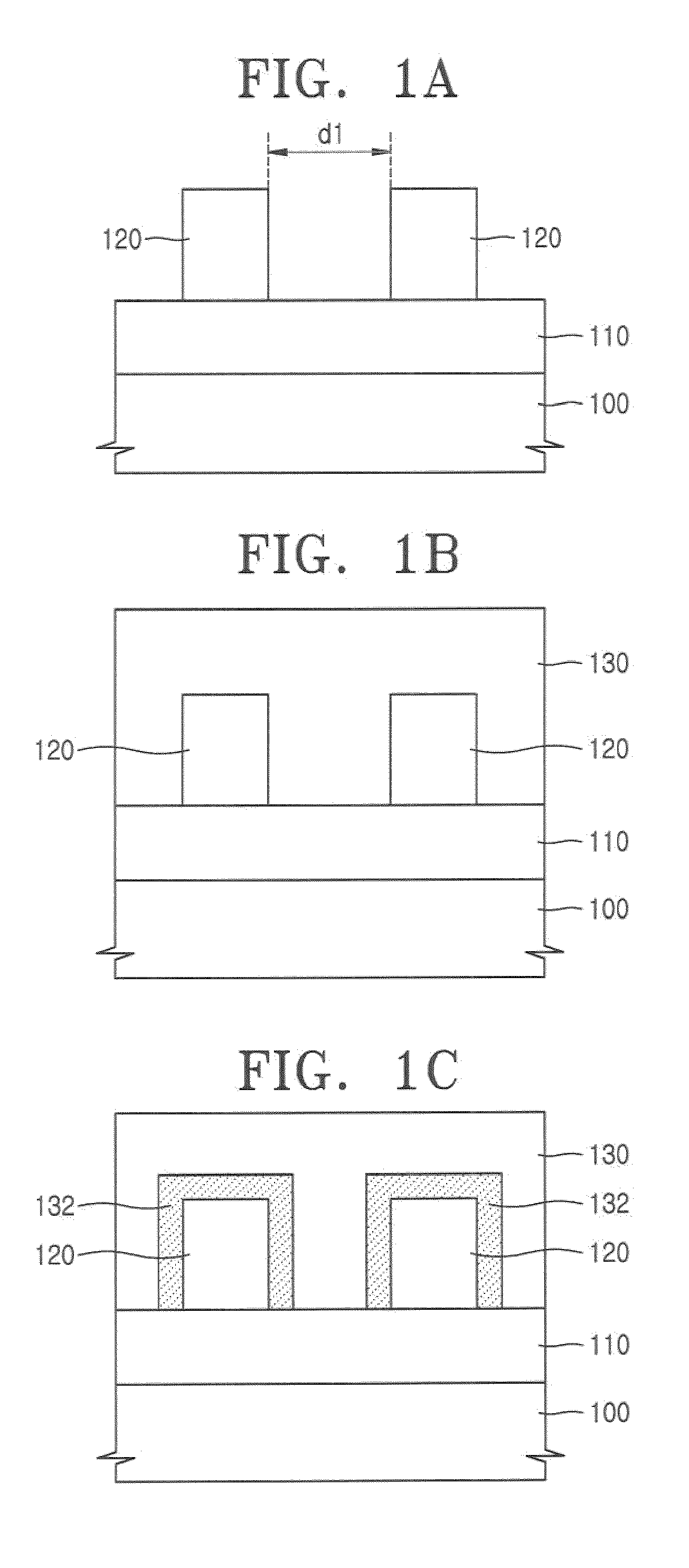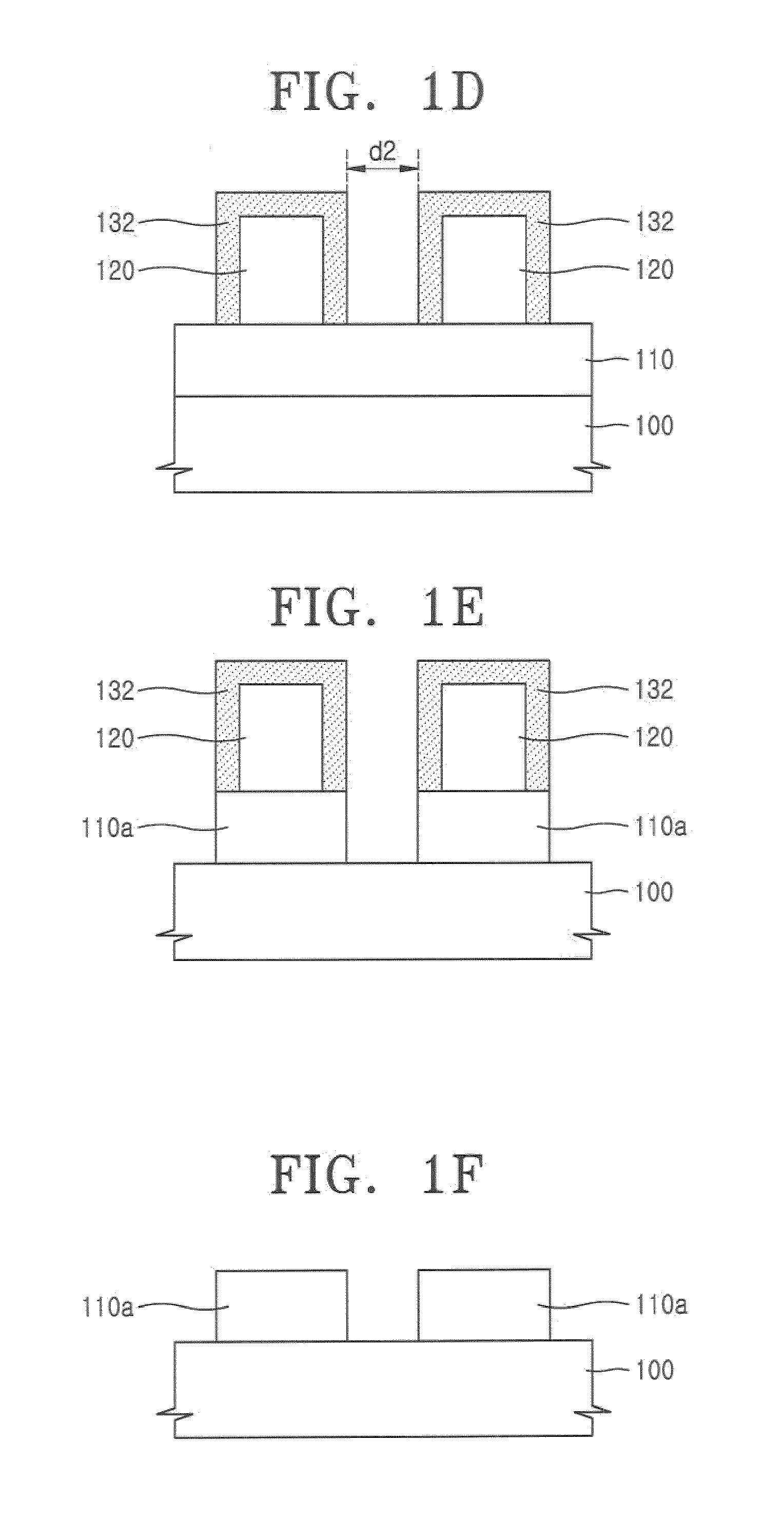Coating Compositions for Use in Forming Patterns and Methods of Forming Patterns
a technology of coating composition and forming pattern, which is applied in the field of coating composition for use in forming pattern and methods of forming pattern, can solve the problems of increasing the difficulty of developing semiconductor devices using next-generation materials, increasing the difficulty of forming fine contact holes, and increasing the difficulty of dry etching and/or line edge roughness, so as to improve the durability against dry etching
- Summary
- Abstract
- Description
- Claims
- Application Information
AI Technical Summary
Benefits of technology
Problems solved by technology
Method used
Image
Examples
example 1
Synthesis of a Polymer for a Coating Composition (I)
[0051]
[0052] In Example 1, 6 g (50 mmol) of Novolak resin (Mw=9,200) and 7 g (50 mmol) of potassium carbonate were dissolved in 50 ml of acetone in a round bottom flask, and 2.7 g (25 mmol) of 2-chloroethyl vinyl ether was slowly dropped in the solution. The mixture was reacted for about 12 hours.
[0053] After the reaction, the obtained precipitations were removed, the reacted materials were slowly precipitated in water, and then the obtained precipitations were filtrated. The filtrated precipitations were dissolved again in a proper amount of THF solution and were slowly precipitated again in an n-hexane solution. The obtained precipitations were dried at about 50° C. for about 24 hours in a vacuum oven. The yield was 85%.
[0054] The result had a weight average molecular weight (Mw) of 11,500 daltons and a polydispersity (Mw / Mn) of 2.6.
example 2
Synthesis of a Polymer for a Coating Composition (II)
[0055]
[0056] In Example 2, 6 g (50 mmol) of poly 4-hydroxy styrene (Mw=10,000) and 7 g (50 mmol) of potassium carbonate were dissolved in 50 ml of acetone in a round bottom flask, and 2.7 g (25 mmol) of 2-chloroethyl vinyl ether was slowly dropped in the solution. The mixture was reacted for about 12 hours.
[0057] After the reaction, the obtained precipitations were removed, the reacted materials were slowly precipitated in water, and then the obtained precipitations were filtrated. The filtrated precipitations were dissolved again in a proper amount of THF solution and were slowly precipitated again in an n-hexane solution. The obtained precipitations were dried at about 50° C. for about 24 hours in a vacuum oven. The yield was 87%.
[0058] The result had a weight average molecular weight (Mw) of 12,500 daltons and a polydispersity (Mw / Mn) of 1.6.
example 3
Evaluation of Lithography (I)
[0059] In Example 3, 1 g of the polymer of Example 1 was dissolved in 40 g of n-butanol and filtrated though a membrane filter of 0.2 μm, to obtain a coating composition for overcoating.
[0060] Anti-reflective coating (ARC) material (such as an ArF Anti-reflective coating) for an exposure wavelength of 193 nm was spin-coated on an 8-inch bare silicon wafer, and baked to form an ARC layer having a thickness of about 240 Å.
[0061] A photoresist used for an exposure wavelength of 193 nm was spin-coated on the ARC layer, and pre-baked at 110° C. for 60 seconds, to form a photoresist layer.
[0062] The surface of the wafer was exposed to an ArF excimer laser using an ArF scanner with NA=0.75 annular and σ=0.85 / 0.55, subjected to post-exposure bake (PEB) at 110° C. for 60 seconds, and developed with a 2.38% tetramethylammonium hydroxide solution for 60 seconds. When a dose was 30 mJ / cm2, a resist pattern having a contact hole pattern with a hole diameter of ab...
PUM
| Property | Measurement | Unit |
|---|---|---|
| wavelength | aaaaa | aaaaa |
| wavelength | aaaaa | aaaaa |
| wavelength | aaaaa | aaaaa |
Abstract
Description
Claims
Application Information
 Login to View More
Login to View More - R&D
- Intellectual Property
- Life Sciences
- Materials
- Tech Scout
- Unparalleled Data Quality
- Higher Quality Content
- 60% Fewer Hallucinations
Browse by: Latest US Patents, China's latest patents, Technical Efficacy Thesaurus, Application Domain, Technology Topic, Popular Technical Reports.
© 2025 PatSnap. All rights reserved.Legal|Privacy policy|Modern Slavery Act Transparency Statement|Sitemap|About US| Contact US: help@patsnap.com



